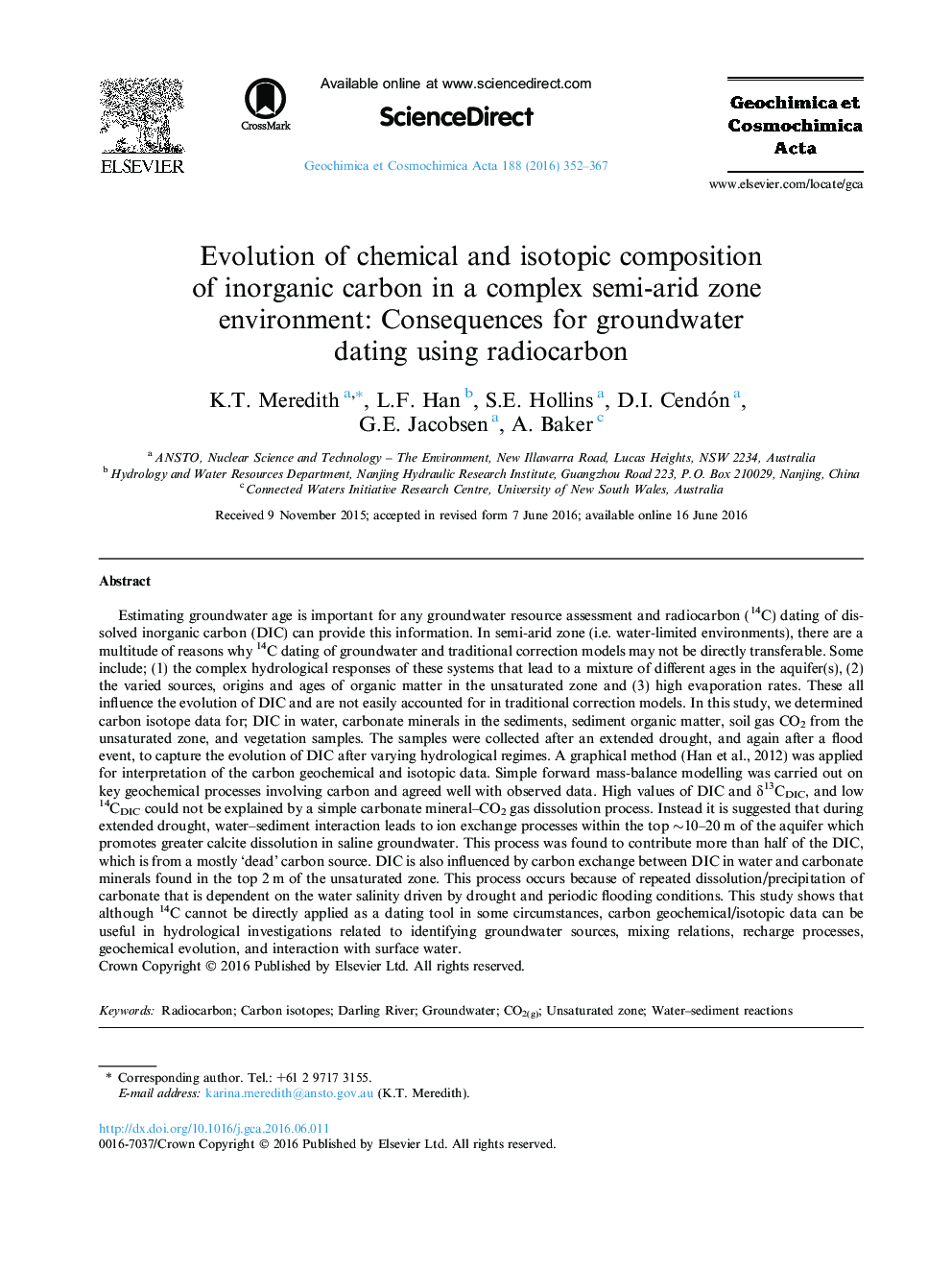| کد مقاله | کد نشریه | سال انتشار | مقاله انگلیسی | نسخه تمام متن |
|---|---|---|---|---|
| 4701777 | 1637969 | 2016 | 16 صفحه PDF | دانلود رایگان |
Estimating groundwater age is important for any groundwater resource assessment and radiocarbon (14C) dating of dissolved inorganic carbon (DIC) can provide this information. In semi-arid zone (i.e. water-limited environments), there are a multitude of reasons why 14C dating of groundwater and traditional correction models may not be directly transferable. Some include; (1) the complex hydrological responses of these systems that lead to a mixture of different ages in the aquifer(s), (2) the varied sources, origins and ages of organic matter in the unsaturated zone and (3) high evaporation rates. These all influence the evolution of DIC and are not easily accounted for in traditional correction models. In this study, we determined carbon isotope data for; DIC in water, carbonate minerals in the sediments, sediment organic matter, soil gas CO2 from the unsaturated zone, and vegetation samples. The samples were collected after an extended drought, and again after a flood event, to capture the evolution of DIC after varying hydrological regimes. A graphical method (Han et al., 2012) was applied for interpretation of the carbon geochemical and isotopic data. Simple forward mass-balance modelling was carried out on key geochemical processes involving carbon and agreed well with observed data. High values of DIC and δ13CDIC, and low 14CDIC could not be explained by a simple carbonate mineral–CO2 gas dissolution process. Instead it is suggested that during extended drought, water–sediment interaction leads to ion exchange processes within the top ∼10–20 m of the aquifer which promotes greater calcite dissolution in saline groundwater. This process was found to contribute more than half of the DIC, which is from a mostly ‘dead’ carbon source. DIC is also influenced by carbon exchange between DIC in water and carbonate minerals found in the top 2 m of the unsaturated zone. This process occurs because of repeated dissolution/precipitation of carbonate that is dependent on the water salinity driven by drought and periodic flooding conditions. This study shows that although 14C cannot be directly applied as a dating tool in some circumstances, carbon geochemical/isotopic data can be useful in hydrological investigations related to identifying groundwater sources, mixing relations, recharge processes, geochemical evolution, and interaction with surface water.
Journal: Geochimica et Cosmochimica Acta - Volume 188, 1 September 2016, Pages 352–367
